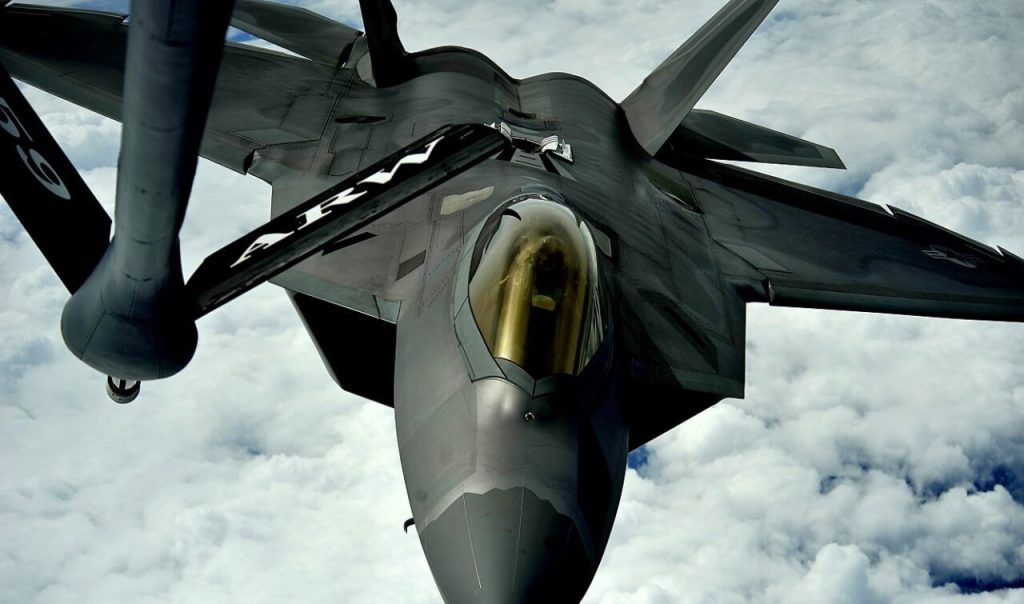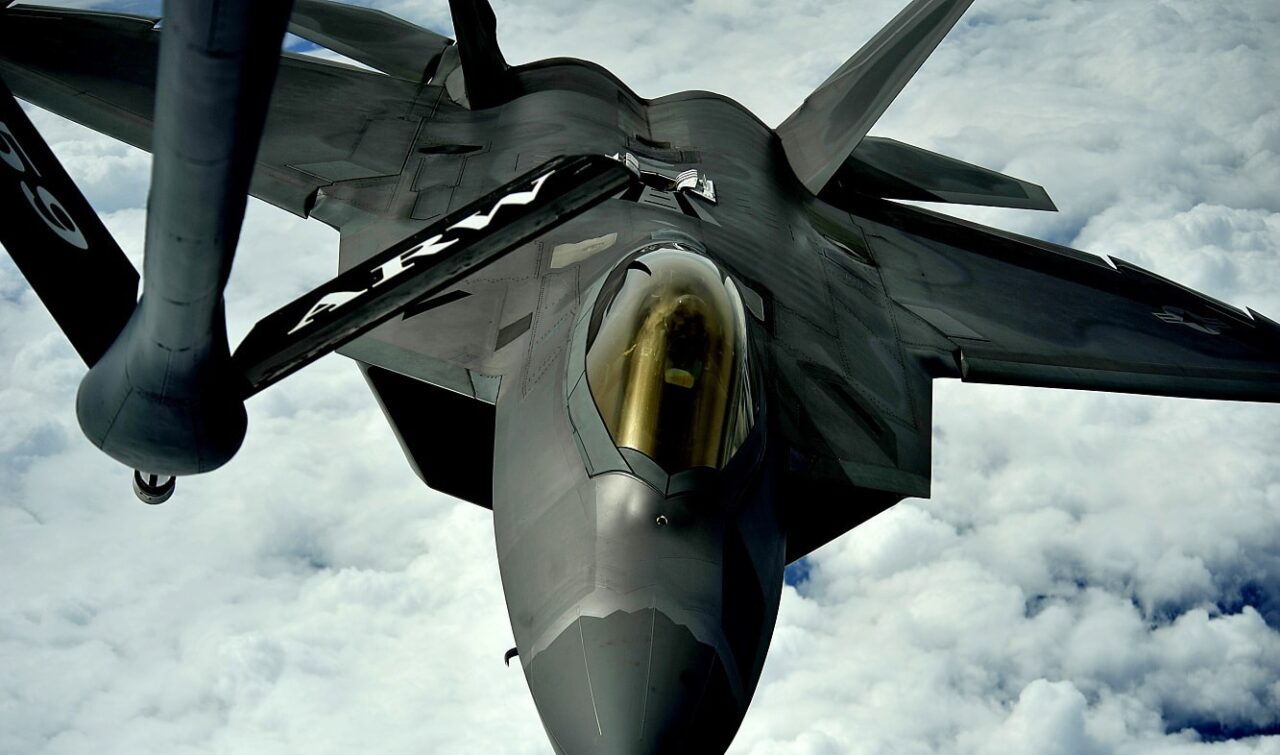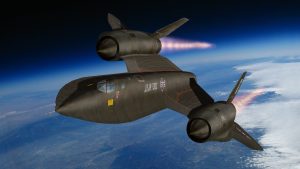When Iranian F-4 pilots got close to a U.S. drone, they were surprised to see an F-22 Raptor following them.

A 1st Fighter Wing’s F-22 Raptor from Joint Base Langley-Eustis, Va., pulls into position to accept fuel from a KC-135 Stratotanker with the 756th Air Refueling Squadron, Joint Base Andrews Naval Air Facility, Md., off the east coast on May 10, 2012. The first Raptor assigned to the Wing arrived Jan. 7, 2005. This aircraft was allocated as a trainer, and was docked in a hanger for maintenance personnel to familiarize themselves with its complex systems. The second Raptor, designated for flying operations, arrived Jan. 18, 2005. On Dec. 15, 2005, Air Combat Command commander, along with the 1 FW commander, announced the 27th Fighter Squadron as fully operational capable to fly, fight and win with the F-22.
Who Wins: F-22 or F-4? Two Sukhoi Su-25s of the Iranian Air Force attempted to shoot down an MQ-1 Predator drone in November 2012. The MQ-1 drone mission was lawful but predictably provocative because it occurred in international air space, 16 miles from the Iranian border.
Two Iranian Su-25s were launched and immediately closed in on the drone. The Su-25’s weapons labored mightily to shoot down the MQ-1, but they built the plane for close air support, not air superiority.
The U.S. drone was unharmed in the confrontation and managed to record it all with its in-built cameras. The United States has adjusted its protocols in light of the incident to safeguard its fleet of vulnerable drones better. In the beginning, it just escorted drones with fighter jets.
The Iranians didn’t hear about the new U.S. policy about drone escort until a year later, in 2013, when they attacked another MQ-1. The United States exported the F-4 Phantom to Iran in the 1970s, when the two countries were allies, but this time the Iranians sent a plane with some air-to-air warfare. Unlike the Su-25, the F-4 could quickly shoot down the MQ-1. The Iranian F-4s thought they were alone when they rushed to attack the MQ-1 but soon realized they had company.
A Lockheed Martin F-22 Raptor, a stealth fighter from the fifth generation, accompanied the MQ-1. The Iranian pilots learned the hard way that day that the F-22 “is equipped with stealth technology that enables aircraft to operate practically unnoticed by radar.” The Iranians had no idea the F-22 was underneath them, stalking them.
This airplane has some seriously impressive and modern gadgetry. As I said before, the F-22 Raptor is an engineering triumph. With its stealth technology, supercruise speed, super-maneuverability, and sensor fusion, the F-22 is the world’s leading air superiority fighter and the first operational fifth-generation fighter.
Iran’s F-4 Phantoms from the Vietnam War era couldn’t compete with a modern F-22. While the F-4 was a capable airframe, it had its first flight in 1958 and was already the most mass-produced American supersonic military aircraft ever. In contrast, the F-22 was a cutting-edge technological marvel of the twenty-first century. The F-22 has impressively advanced software. Sensor fusion “combines information gathered by several onboard sensors to produce a more complete tactical picture,” I explained.
Dogfighting is not the F-4’s specialty. “The Phantom was not particularly agile,” I penned. The F-4 wasn’t built to engage in dogfights and had problems with yaw when turning sharply. It meant that enemy MiGs could often outperform it. The F-4’s primary function was not air combat maneuverability but the launch of long-range, radar-guided missiles. The F-22 was conveniently located below the Iranians, so they could easily see it.
The F-22 pilot had sneaked right in without raising suspicion. He “flew under their aircraft to check out their weapons load without them knowing he was there,” former Air Force Chief of Staff General Mark Welsh stated. The Raptor pilot eventually tipped off the Iranians to his presence after he had figured out the F-4s’ payloads.
Welsh said he “drove up on their left wing and hailed them and said, “You really ought to go home. The F-4s bowed to orders and fled the scene.
The event is symptomatic of the tension that has plagued relations between the United States and Iran since the late 1970s. The two sides are currently negotiating a solution to the impasse over Iran’s nuclear program, which has made the country a pariah on the international stage and is said to be close to breaking out. The entire world is keeping a close eye on the talks. The two countries should avoid more dogfighting cases in the meantime.






